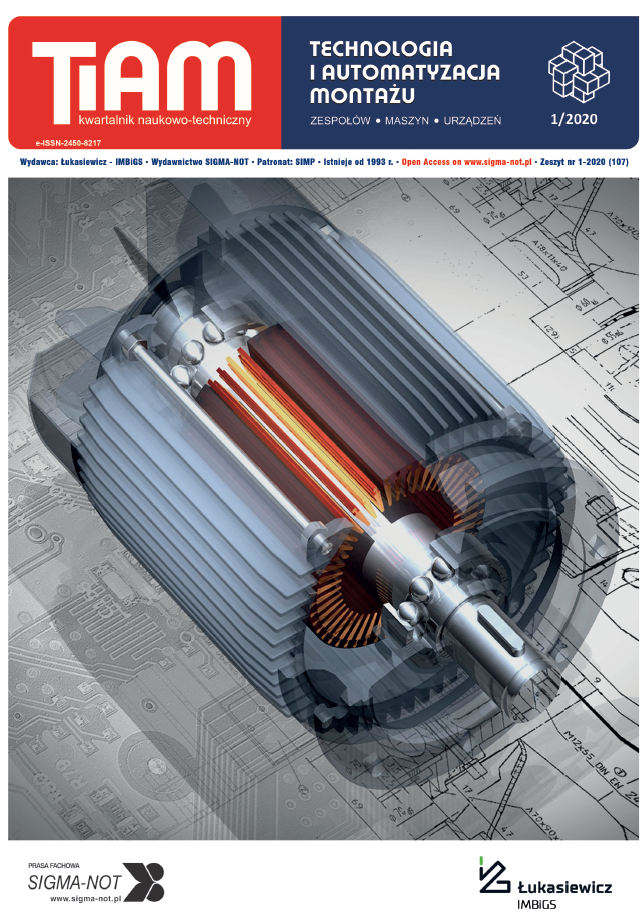Abstract
Cleaning and removal of components of the gating system, and finishing of castings are the most labor-consuming and damaging to health foundry processes. This paper presents the results of an analysis of labor consumption of the process of removal of gating systems of aluminium castings, which were carried out in a conventional manner using a band saw and a boring machine, and using an industrial robot. In the final part of this paper the analysis of occupational hazard of work-stands is presented. It has been shown that the use of robotization leads to an increase both the productivity of the process and work safety. The use of an industrial robot allows to reduce the labor consumption of the process of removal of gating systems by 29,5% in relation to the non-robotized stand. Furthermore, on the robotized stand almost all the time needed for the process of removal of the gating system is connected with the machining. It represents 98.7% of the production cycle. In the case of non-robotized stand, the machining takes 79% of the total time required for treatment of one piece of the casting.
This is an Open Access article distributed under the terms of the Creative Commons Attribution License CC BY 4.0 (https://creativecommons.org/licenses/by/4.0/)
References
Brogardh T. 2007. „Present and future robot control development — An industrial perspective”. Annual Reviews in Control 31(1): 69-79. DOI: 10.1016/j.ar¬control.2007.01.002.
Brussel H.V., Persoons W. 1996. „Robotic debu¬rring of small series of castings”. CIRP Ann.-Ma¬nuf. Techn. 45(1): 405-410. DOI: 10.1016/S0007- 8506(07)63091-1.
Campbell J. 2015. Properties of castings. In J. Cam¬pbell (Ed.), Complete casting handbook (2nd ed.). Waltham, MA: Butterworth-Heinemann.
Jaworski J., Kluz R., Trzepieciński T. 2014. „Inve¬stigation of stability of fabrication system of casting parts”. Arch. Foundry Eng. 14(1): 5-8.
Kluz R. 2012. „Analysis of the repeatability positio¬ning of the assembly robot”. Arch. Mech. Techn. Au¬tom. 32(3): 59-68.
Kosler H., Pavlovčič U., Jezeršek M., Možina J. 2016. „Adaptive robotic deburring of die-cast parts with po¬sition and orientation measurements using a 3D la¬ser-triangulation sensor”. Stroj. Vestn.-J. Mech. Eng. 62(4): 207-212. DOI: 10.5545/sv-jme.2015.3227.
Stefanescu D.M. 2015. Science and Engineering of Casting Solidification. (3rd ed.). Heidelberg: Sprin-ger.
Syrcos G.P. 2003. „Die casting process optimiza¬tion using Taguchi methods”. J. Mat. Proc. Technol. 135(1): 68-74. DOI: 10.1016/S0924-0136(02)01036- 1.
Trebuna P., Pakarcikowa M., Kronova J. 2018. „Automation of the casting process by the use of simulation software”. Management and Production Engineering Review 9(1): 82-89.


